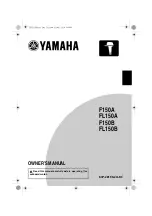
Hardware Description
ARM DUI 0447J
Copyright © 2009-2014, ARM. All rights reserved.
2-4
ID052914
Non-Confidential
2.1.1
Motherboard buses
The motherboard architecture uses the following buses:
•
Configuration Bus
•
Static Memory Bus
•
System Bus
•
MultiMedia Bus
•
High-Speed Bus
on page 2-5
•
PCIe Bus
on page 2-5
.
Figure 2-1 on page 2-2
shows how these buses interconnect.
Configuration Bus
The
Motherboard Configuration Controller
(MCC) and Daughterboard Configuration
Controller use the
Configuration Bus
(CB) to determine the functionality and capabilities of the
daughterboards before powering up and releasing the resets. This minimizes the chance of
damage to the boards. The CB controls the power and reset sequence. It also updates the FPGA
images and software on the daughterboards.
Static Memory Bus
The underlying architecture uses the
Static Memory Bus
(SMB) for all peripheral and memory
accesses from the daughterboards to the motherboard. A Static Memory Controller in the
daughterboard outputs chip select signals to access memory and peripherals on the
motherboard. The memory controller determines the base address for each chip select. See
IO
Peripherals and interfaces
on page 4-26
.
Note
•
Site 2 has limited access to the motherboard.
•
Site 2 can only access the motherboard using chip select nCS7, peripherals, and nCS3,
Video SRAM only.
System Bus
The System Bus connects interrupts and DMAs:
•
From the motherboard peripherals to the daughterboards.
•
Between the daughterboards.
MultiMedia Bus
The
MultiMedia Bus
(MMB) enables the motherboard or either daughterboard to drive audio
and video data to the DVI connector. A dedicated FPGA manages multiplexing the sources and
driving the outputs to the HDMI transmitter.
The motherboard supports:
•
Video with 25 to 165MHz pixel clock, DTV 480p to 1080p, or PC 640x480 to 1600x1200,
VGA to UXGA
•
Audio S/PDIF interface with 2 channels at 192kHz or I2S interface with eight channels at
96kHz.
















































